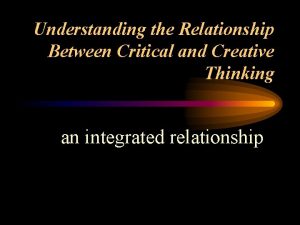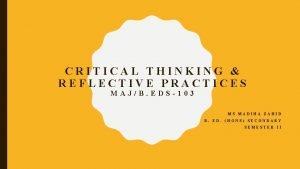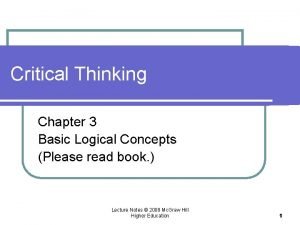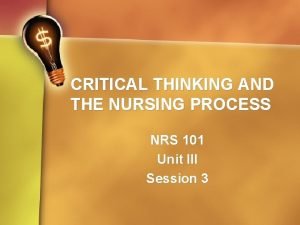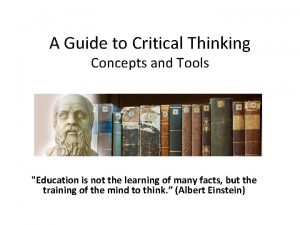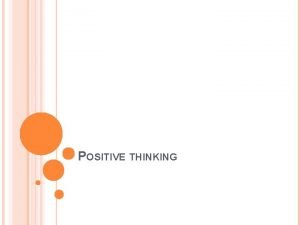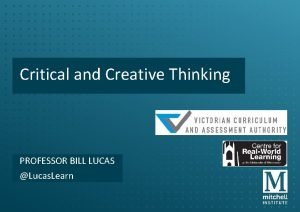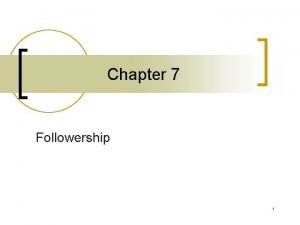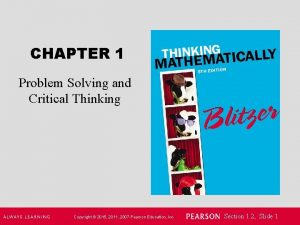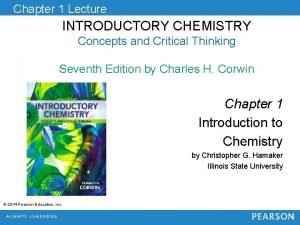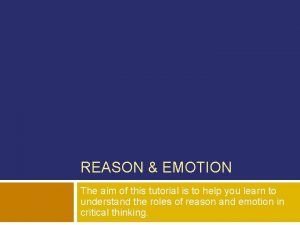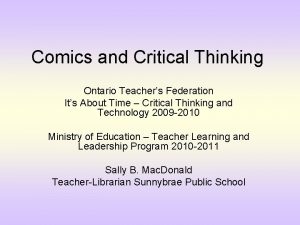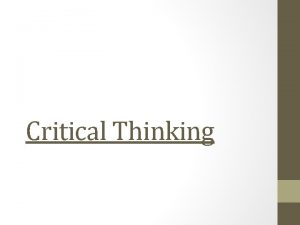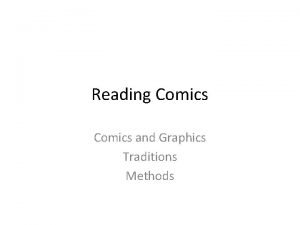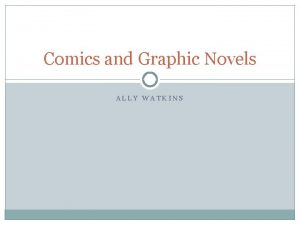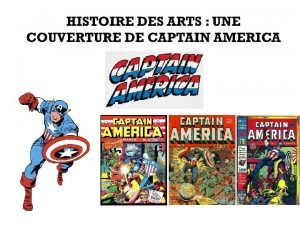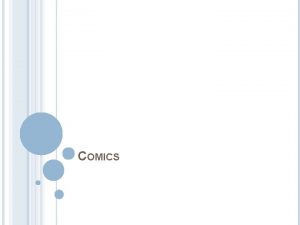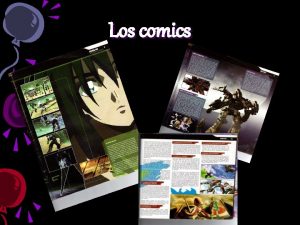Comics and Critical Thinking Ontario Teachers Federation Its

















- Slides: 17

Comics and Critical Thinking Ontario Teacher’s Federation It’s About Time – Critical Thinking and Technology 2009 -2010 Ministry of Education – Teacher Learning and Leadership Program 2010 -2011 Sally B. Mac. Donald Teacher-Librarian Sunnybrae Public School

Visual Components of a Comic Borders and Gutters

Borders are used to surround the panels of a comic and to enclose word, thought and caption balloons.

Line Weights of Borders The lines weights are used to represent different effects and moods. • Rough or jagged – anger or distress • Thin wavy – weakness or spookiness • “Electric” – radios, TV, telephone dialogue • Burst borders or double-bordered balloons represent loud shouting • Rounded panel borders/ uneven – flashbacks (Anina Bennett)

Borders Tobin, Paul Ferrari, Alessandro

Electric Balloons The jagged edge of a word balloon represents that the voice is coming from a radio; over an intercom, TV, and in these two examples from a computer and an GPS. Fisch, Sholly Snider, Jesse Blaze

Gutters A gutter is the space between the panels of a comic.

Gutters are very important as they represent the events between the action happening within the panels. Gutters can represent a time lapse of seconds or years. Readers imagine what happens between the panels in the gutters. It is important that the transition between panels is smooth and coherent. (Anina Bennett)

Gutters Tobin, Paul Ferrari, Alessandro

Panel Transitions Scott Mc. Cloud, author of “Understanding Comics” has identified six different transitions between panels. 1. Non-sequitur – no obvious connection between imagery in panels. 2. Aspect to aspect – depicts different elements of place, mood or concept. Common in Manga.

– same subject in a sequence of dif ferent moments but with little time laps e o t t en m o t M n. e 3 m o M Snider, Jesse Blaze

ct e j b u ne S e c o s t e t c m e a j s b e u h t S. in 4 – cts e j b u s t differen Fisch, Sholly

5. Scene to Scene – panels that show completely different scenes. The gutters represent a substantial distance between time and or space. The dialogue, captions and panel compositions are extremely important in the bridging the scenes. Tobin, Paul

6. Action to Action – same subject in a sequence of different yet connected actions – more time lapse Fisch, Sholly

Works Cited • Barbera, Hanna, and Ivan Velez. "Chills and Spills! Scooby-Doo!" Comic Strip. Ed. Harvey Richards. Vol. #152. New York: DC Comics, 2010. Print. • Bennett, Anina. "Visual Language: Writing for Comics. " Bigredhair. Web. 14 Dec. 2009. <http: //www. bigredhair. com/work/comics>. • Bledsoe, Glen. Comic Life. Computer Software. Comiclife. com. Web. 11 Jan. 2010. <http: //www. comiclife. com/education>. • Ferrari, Alessandro. "Walt Disney Comics. " Comic Strip. Ed. Aaron Sparrow. Walt Disney's Comics and Stories. Vol. #702. Los Angeles: Boom Kids, 2009. Print.

Works Cited Continued • Fisch, Sholly. "Batman The Brave and The Bold. " Comic Strip. Ed. Michael Siglan. Mixed Signals. Vol. 13. New York: DC Comics, 2010. Print. • Mc. Cloud, Scott. "Cartoon. " World Book Student. World Book Inc. Web. 11 Jan. 2010. <http: //www. worldbookonline. com/student/printarticle? id=ar 097660& st-editorial+comics>. • Mc. Cloud, Scott. "Comics. " World Book Student. World Book Online. Web. 11 Jan. 2010. <http: //www. worldbookonline. com/student/printarticle? id=ar 125620& st=comics>. • Norton, B. (2003). The Motivating Power of Comic Books: Insight from Archie Comic Readers. The Reading Teacher, 57, 140– 147.

Works Cited Continued • Snider, Jesse Blaze. "Toy Story: The Return of Buzz Lightyear Part 2. " Comic Strip. Ed. Aaron Sparrow. Disney Pixar. Vol. 1. Los Angeles: Boom Kids, 2009. Print. • Tobin, Paul. "Marvel Adventures The Avengers. " Comic Strip. Ed. Nathan Cosby. Vol. 36. New York: Marvel Inc, 2009. Print. • Waid, Mark, and Landry Walker. "The Incredibles. " Comic Strip. Ed. Aaron Sparrow. Disney Pixar. Vol. 4. Los Angeles: Boom Kids, 2009. Print. • Danuta Woloszynowicz- “Comic Life- A Tool to Motivate Struggling Readers and Writers”. SMCDSB Curriculum/Technology Consultant 2009 •
 Critical semi critical and non critical instruments
Critical semi critical and non critical instruments Spaulding classification system
Spaulding classification system Perbedaan critical thinking dan creative thinking
Perbedaan critical thinking dan creative thinking Kim kroll teachers pay teachers
Kim kroll teachers pay teachers Relationship between critical and creative thinking
Relationship between critical and creative thinking Types of nursing diagnoses
Types of nursing diagnoses Critical thinking and reflective practices
Critical thinking and reflective practices Creative thinking
Creative thinking Logic and critical thinking chapter 3
Logic and critical thinking chapter 3 Levels of critical thinking in nursing
Levels of critical thinking in nursing Critical thinking concepts
Critical thinking concepts Critical thinking positive and negative
Critical thinking positive and negative Critical and creative thinking vic curriculum
Critical and creative thinking vic curriculum Bill lucas creativity wheel
Bill lucas creativity wheel Critical and uncritical thinking
Critical and uncritical thinking Chapter 1 problem solving and critical thinking
Chapter 1 problem solving and critical thinking Introductory chemistry concepts and critical thinking
Introductory chemistry concepts and critical thinking Emotions and critical thinking
Emotions and critical thinking




